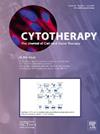克服MSC-sEV疗法的挑战:十年研究后的见解和进展。
IF 3.2
3区 医学
Q2 BIOTECHNOLOGY & APPLIED MICROBIOLOGY
引用次数: 0
摘要
在过去的十年中,间充质基质细胞衍生的小细胞外囊泡(MSC- sev)已经成为一种有前景的治疗方法,将重点从MSC植入或分化转移到它们的sev分泌-特别是那些小于200 nm的sev -介导再生和免疫调节功能。从细胞疗法过渡到基于sev的疗法具有临床优势,包括减少了细胞活力、储存和给药的挑战,并提高了药理学的可预测性。然而,制造MSC-sEV产品面临着定义关键质量属性(cqa)以保持一致性和效力的挑战。变异源于细胞来源、培养条件、富集技术和间充质干细胞内在异质性的差异。即使使用永生化克隆MSC系也不能完全消除变异,因为发育过程、表观遗传修饰或遗传漂变等因素可能导致异质性的重新出现。MSC-sEV产品复杂的、多模式的作用模式,涉及影响各种细胞类型和过程的多种机制,使建立强大的效价cqa变得更加复杂。传统的EV介导的信号传导模型表明sev由靶细胞直接内化,但由于EV摄取效率低下和观察到的高治疗效果,这些模型越来越受到挑战。相反,EMCEV模型提出msc - sev通过调节细胞外环境发挥作用,实现“一个EV与多个细胞”的相互作用。总之,尽管MSC-sEV产品由于其多模态作用和功能冗余而具有重要的治疗前景,但制造挑战和确定效价cqa的复杂性仍然是临床转化的障碍。在认识到“过程决定产品”的同时,注重识别基于特定作用机制的关键效价相关cqa的务实方法可能促进MSC-sEV疗法进入临床应用。本文章由计算机程序翻译,如有差异,请以英文原文为准。
Overcoming challenges in MSC-sEV therapeutics: insights and advances after a decade of research
Over the past decade, mesenchymal stromal cell-derived small extracellular vesicles (MSC-sEVs) have emerged as promising therapeutics, shifting the focus from MSC engraftment or differentiation to their secretion of sEVs—particularly those under 200 nm—that mediate regenerative and immunomodulatory functions. Transitioning from cell therapies to sEV-based therapies offers clinical advantages, including reduced challenges with cell viability, storage, and administration, and improved pharmacological predictability. However, manufacturing MSC-sEV products faces challenges in defining critical quality attributes (CQAs) for consistent identity and potency. Variability arises from differences in cell sources, culture conditions, enrichment techniques, and the inherent heterogeneity of MSCs. Even the use of immortalized clonal MSC lines may not fully eliminate variability, as factors such as developmental processes, epigenetic modifications, or genetic drift could lead to the re-emergence of heterogeneity. Establishing robust potency CQAs is further complicated by the complex, multimodal modes of action of MSC-sEV products, which involve diverse mechanisms impacting various cell types and processes. Traditional models of EV mediated signalling suggesting direct internalization of sEVs by target cells are increasingly challenged due to inefficient EV-uptake and the high therapeutic efficacy observed. Instead, the Extracellular Modulation of Cells by EVs (EMCEV) model proposes that MSC-sEVs exert their effects by modulating the extracellular environment, enabling a “one EV to many cells” interaction. In conclusion, while MSC-sEV products hold significant therapeutic promise due to their multimodal action and functional redundancy, manufacturing challenges and the complexity of defining potency CQAs remain hurdles to clinical translation. A pragmatic approach focusing on identifying key potency-related CQAs based on specific mechanisms of action—while recognizing that “the process defines the product”—may facilitate the advancement of MSC-sEV therapeutics into clinical applications.
求助全文
通过发布文献求助,成功后即可免费获取论文全文。
去求助
来源期刊

Cytotherapy
医学-生物工程与应用微生物
CiteScore
6.30
自引率
4.40%
发文量
683
审稿时长
49 days
期刊介绍:
The journal brings readers the latest developments in the fast moving field of cellular therapy in man. This includes cell therapy for cancer, immune disorders, inherited diseases, tissue repair and regenerative medicine. The journal covers the science, translational development and treatment with variety of cell types including hematopoietic stem cells, immune cells (dendritic cells, NK, cells, T cells, antigen presenting cells) mesenchymal stromal cells, adipose cells, nerve, muscle, vascular and endothelial cells, and induced pluripotential stem cells. We also welcome manuscripts on subcellular derivatives such as exosomes. A specific focus is on translational research that brings cell therapy to the clinic. Cytotherapy publishes original papers, reviews, position papers editorials, commentaries and letters to the editor. We welcome "Protocols in Cytotherapy" bringing standard operating procedure for production specific cell types for clinical use within the reach of the readership.
 求助内容:
求助内容: 应助结果提醒方式:
应助结果提醒方式:


